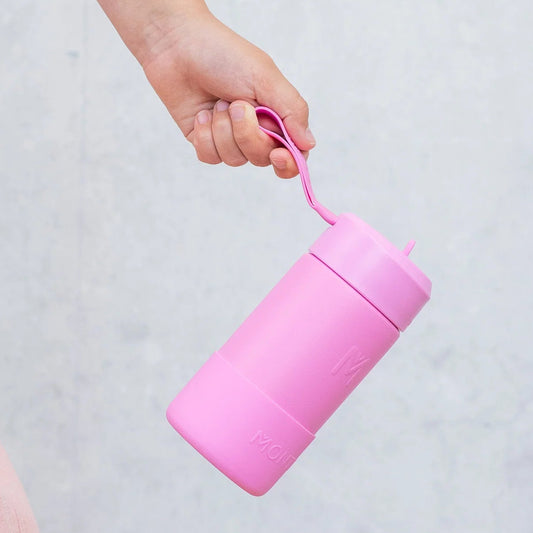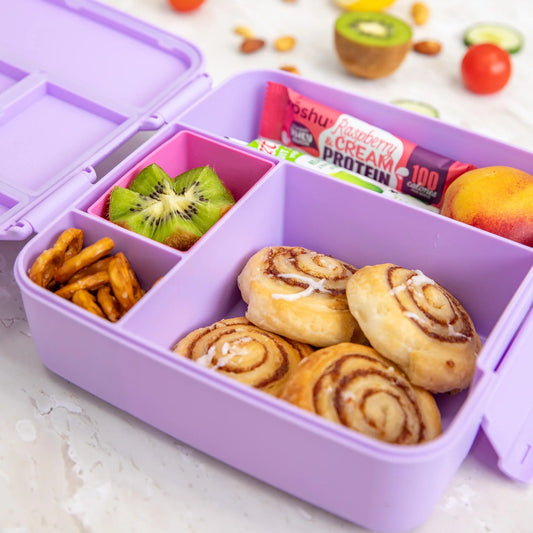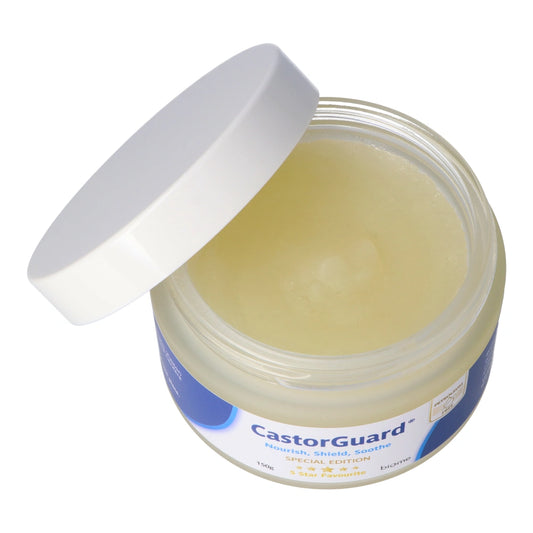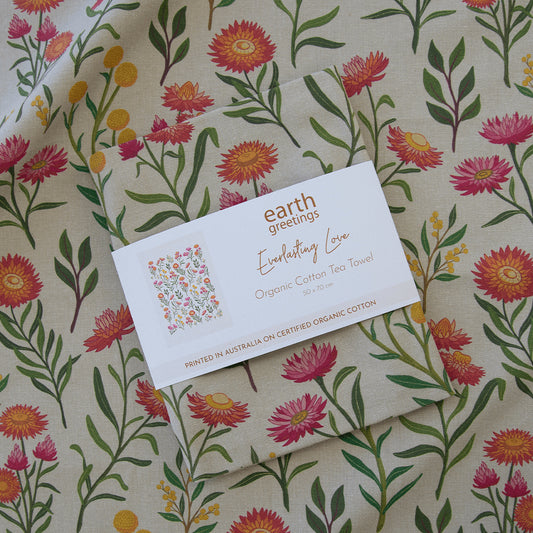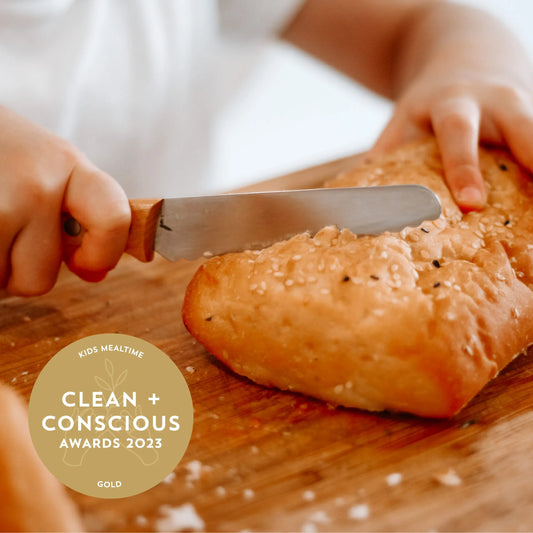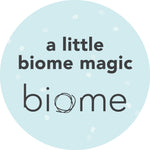
In a world where food waste is rampant, supply chains are uncertain, and supermarket shelves are filled with ultra-processed products, learning to preserve your own food is more than just a nostalgic hobby—it's an empowering act of self-sufficiency and sustainability! And we are seeing a surge in interest due to the cost-of-living crisis and environmental and health concerns.
From tangy ferments to sweet jams, there are so many ways to extend the life of your fruits and vegetables without synthetic additives or plastic packaging.
But, if you're confused about the difference between sauerkraut, dill pickles and mango chutney, you're not alone! In this guide, we explain the six most popular natural food preservation methods, the benefits, and the produce best suited for each.
Once you understand the why and how behind each method, you'll feel more confident to give it try rather than buying store-bought versions.
🥬 Fermentation ➝ uses salt and naturally occurring bacteria to convert sugars into lactic acid in an oxygen-free environment, creating probiotic-rich foods like sauerkraut and kimchi that support gut health.
🥒 Pickling ➝ involves immersing food in a vinegar-based acidic solution to quickly preserve and flavour vegetables—but does not create probiotics.
🍓 Preserving ➝ uses sugar and heat to kill bacteria and reduce moisture (think jams and chutney), allowing fruits and vegetables to be safely stored for months or even years.
- - - - - - - - - - - -
1. Fermentation
What it is:
Fermentation uses naturally occurring bacteria and yeasts to transform sugars in food into acids, gases, or alcohol. In vegetable fermentation (like sauerkraut or kimchi), beneficial bacteria produce lactic acid that preserves the food.
How it works:
Simply combine vegetables with salt (and sometimes spices), submerge completely in brine, and allow the fermentation process to take place in an oxygen-reduced environment. Read a caution note about mould at the end.
Brine is a salty liquid that helps create a safe environment for beneficial bacteria to grow while keeping harmful microbes at bay. You can create a natural brine by massaging salt into watery vegetables (like cabbage) to draw out their moisture, or you can make a wet brine by dissolving salt in water and pouring it over firm vegetables like carrots.
Benefits:
- Adds probiotics that support gut health and immunity
- Enhances flavour and digestibility
- Reduces food waste by preserving garden and seasonal excess
- Requires no energy use or refrigeration during the process
Tools you need:
Fermentation jars with air locks
Glass weights or something heavy to hold down
Non-iodised salt
Fermentation weights are used to keep vegetables fully submerged in brine, which is essential for preventing exposure to oxygen. This creates the ideal anaerobic environment for beneficial bacteria to thrive and prevents mould or spoilage. Weights are especially useful for vegetables that tend to float, helping to ensure a safe and successful ferment.
Foods best suited for:
Cabbage (sauerkraut), carrots, radishes, garlic, green beans, beetroot, turnips, cucumbers (fermented style).
Shelf life:
- Refrigerated: 6–12 months (sometimes longer)
- Room temperature: Shorter, unless vacuum-sealed or very acidic
Note: Always keep ferments submerged in brine and stored in clean jars. Ferments are alive and continue to evolve in flavour over time.
2. Pickling
What it is:
Pickling involves fully submerging food in a vinegar-based acidic brine, which quickly preserves the contents and kills or inhibits harmful bacteria. It also creates a distinct tangy flavour.
How it works:
Vegetables are placed in a vinegar-based brine with salt, sugar, and spices. The acidity prevents harmful bacteria from growing.
Benefits:
- Quick and easy with immediate flavour results
- Shelf-stable when processed properly
- Ideal for traditional favourites like pickled onions or beetroot
Tools you need:
Pickling jars
Funnels
Vinegar
Sterilising tools
Glass weights are sometimes helpful for quick pickles or refrigerator pickles to stop floaters
Foods best suited fords: Cucumbers, onions, beetroot, cauliflower, chillies, capsicum, green beans, eggs.
Shelf life:
- Unopened and properly sealed by boiling method: 1–2 years in the pantry
- Opened (refrigerated): 1–3 months for best quality
Note: High-acid pickles in sterilised jars are shelf-stable if processed properly. Always refrigerate once opened.
3. Jam, Chutney & Preserves
What it is:
Preserving with sugar (and sometimes vinegar or alcohol) involves cooking fruits and vegetables to reduce moisture and kill bacteria, then sealing them in sterilised jars.
How it works:
High heat and sugar act as natural preservatives. Pectin (either natural or added) helps jams gel.
Benefits:
- Long shelf life (often 1-2 years)
- Delicious way to enjoy seasonal produce year-round
- Great for gifting and avoiding waste
Tools you need:
Heavy-bottomed pan
Preserving jars with sealing lids
Pectin
Preserving spoon or thermometer
Foods best suited for:
Berries, stone fruit, apples, citrus, tomatoes (for chutneys), rhubarb, feijoa.
Shelf life:
- Sealed in sterilised jars and boiled: Up to 1 year in the pantry
- Opened (refrigerated): 2–3 months
Note: Sugar acts as a preservative. Store in a cool, dry place and use clean utensils to avoid mould.
4. Freezing
What it is:
Let's not forget one of the simplest and most accessible methods. Freezing slows microbial activity and enzyme processes that cause food to spoil.
How it works:
Clean and prep fruits, veggies, herbs, or meals, then freeze in suitable containers or bags.
Benefits:
- Locks in nutrients with minimal effort
- Extends life of leftovers and fresh produce
- Reduces reliance on plastic-packaged frozen goods
Tools you need:
Reusable silicone bags,
Glass containers
Freezer labels
Foods best suited for:
Berries, bananas, peas, broccoli, pumpkin, corn, leftover cooked meals, soups, sauces, herbs (in oil or water).
Shelf life:
- Most fruits & vegetables: 8–12 months
- Herbs, blanched greens, leftovers: 3–6 months
Note: Best if vacuum sealed or stored in airtight containers to prevent freezer burn.

5. Dehydrating
What it is:
Dehydrating removes moisture from food to inhibit bacterial growth. It can be done with a dehydrator, oven, or even air-drying in the right climate.
How it works:
Food is sliced and dried at a low temperature over time. Water activity is reduced, making it shelf-stable.
Benefits:
- Lightweight and space-saving for storage and hiking
- Concentrates flavour and sweetness
- Ideal for making dried herbs, fruit leathers, and veggie chips
- Preserves food without refrigeration
Tools you need:
Dehydrator or oven with low-heat setting, mesh trays or baking sheets
Foods best suited for:
Apples, pears, bananas, tomatoes, chillies, citrus peel, mushrooms, herbs, leafy greens, zucchini, carrots.
Shelf life:
- In airtight container: 6 months to 1 year
- Vacuum sealed & cool storage: Up to 2 years
Note: Store in a dark, dry location. The drier the food, the longer it lasts.
6. Root Cellaring (Cool Storage)
What it is:
A low-tech, no-energy method that relies on cool, stable temperatures to extend the life of certain produce like potatoes, pumpkins, and apples.
How it works:
Store crops in breathable containers or directly in soil or sand in a cellar, garage, or shady cupboard.
Benefits:
- No equipment or electricity needed
- Preserves texture and nutrients
- Great for self-sufficiency and low-waste living
Tools you need:
Cool, dark space; boxes, baskets, or sand; breathable storage bags
Foods best suited for:
Potatoes, sweet potatoes, pumpkins, apples, pears, onions, garlic, carrots, turnips, parsnips, cabbages.
Shelf life:
- 2–6 months depending on the crop and conditions.
- - - - - - - - - - - -
Why Start Preserving Food Now?
Preserving your own food puts power back in your hands. It:
- reduces food waste;
- supports your health with cleaner ingredients and probiotics;
- helps save money by preserving produce when it is in season and at its cheapest; and,
- reduces excess packaging and supermarket reliance.
Whether you're looking to support your gut, make the most of seasonal produce, or simply find joy in slow living, food preservation offers a deeply rewarding path.
At Biome, we offer everything you need to get started—from fermentation kits and Australian pickling spices to glass jars, books, and reusable storage. Explore our natural food preservation collections and bring this nourishing practice into your home.
Start small. Stay seasonal. And preserve with purpose.
MORE READING
How To Ferment Vegetables at Home.
Freezing Food in Glass - Why We Love It.
How Fermented Foods Support Gut Health & Immunity
How to Make Your Own Delicious Kombucha
Is fermentation safe? How to prevent mould?
While fermentation is a natural and generally safe process, it's important to be mindful of mould, especially when starting out. The most common cause of mould is vegetables that are not fully submerged in the brine, as exposure to oxygen can allow unwanted bacteria or fungi to grow. If you see a thin, white film on the surface—often called kahm yeast—don’t worry; it’s harmless, though it may affect flavour slightly. However, fuzzy mould that is blue, green, black, or pink, or anything that smells rotten or off, is a red flag and the ferment should be discarded. Always first wash jars and utensils in hot soapy water, use filtered water, weigh your vegetables down under the brine, and store your ferment in a cool, dark spot to minimise risks and ensure success.
Where do Kombucha and Kefir fit into all this?
Kombucha and kefir are both fermented beverages and fall under the broader category of fermentation, just like sauerkraut or kimchi—but they use different ingredients and microbial cultures.
Kombucha is made by fermenting sweetened tea with a SCOBY (Symbiotic Culture of Bacteria and Yeast), which feeds on the sugar and tannins to produce beneficial acids, mild carbonation, and probiotics.
Kefir is typically made by fermenting milk (or sometimes coconut water or juice) with kefir grains—a mixture of bacteria and yeast in a protein and sugar matrix. The result is a tangy, slightly fizzy drink rich in diverse probiotics.
While vegetable fermentation uses salt to create lactic acid bacteria, kombucha and kefir rely on sugar and a broader range of microbes to ferment liquids, making them refreshing, probiotic-rich drinks.




